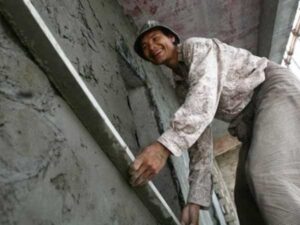
Interview with Radha Rajkotia (Building Markets)
Building Markets supports businesses across many sectors in accessing new market opportunities. Radha Rajkotia of Building Markets spoke with Erica
The Office of American Possibilities coordinates collaborative work on “moonshot” ideas to tackle social challenges.
John Bridgeland of the Office of American Possibilities spoke with Lissa Harris on March 7, 2023. Click here to read the full conversation with insights highlighted.
Lissa Harris: Can you introduce yourself and talk in a little bit more depth about the problems that your work is addressing and how you’re responding to them?
John Bridgeland: My name is John Bridgeland and I’m executive chairman of the Office of American Possibilities, which is a civic moonshot factory to tap the ingenuity and creativity of people across politics, sectors, and backgrounds to tackle big public challenges together.
First, maybe a point about the process. We went back and studied over a hundred initiatives, from the founding of the country through the President’s Emergency Plan for AIDS Relief, to understand what it was about certain initiatives across history that transcended time, politics, sector, and had extraordinary results? We identified six common elements across those initiatives, and we’ve been basically pilot testing them across eight significant projects, from the COVID Collaborative, which was formed at a time when there wasn’t a national COVID response plan, and governors in particular were desperate to make common cause, to welcome.us, which is engaged in the resettlement of over a hundred thousand Ukrainians, 75,000 Afghans, and now has also led to changes in administration policy for other refugees from other countries, and a whole host of other projects.
Lissa Harris: Are these direct service projects? Are you working with other organizations, with policymakers? Who are the beneficiaries of your work and how do they benefit from what you do?
John Bridgeland: I would say the American people and her institutions are the beneficiaries. We discovered that there’s so much talent in the country, but people lack, one, the belief that they can actually tackle big challenges and, two, platforms for shared work. On the COVID Collaborative, we brought together all the former CDC directors, US Surgeon Generals, the former living presidents and first ladies, governors, mayors, of course the medical health community, and those in the educational and economic communities, because it wasn’t just a health inquiry. COVID has also had a dramatic impact on our educational systems and outcomes and economic systems and outcomes. And then also the associations representing the diversity of the country—the NAACP, UnidosUS, National Congress of American Indians, and Asian Pacific Islander American Health Forum. When a pandemic meets a system of federalism, you actually need a whole country’s response. It can’t just be just the federal government, although we continue to be in weekly briefings with the White House. To get more specific, we created a $250 million vaccination education campaign with the Ad Council and deployed credible messengers mostly at the local level to boost vaccine uptake. And 81% of the American people have been vaccinated and more than 90% of 12 and over have been vaccinated. We still have progress to make on boosting, but we’re confident, given the government didn’t even initially have a vaccination education campaign, that that wouldn’t have happened without this $250 million vaccination education campaign. Another beneficiary: there are more than 240,000 children who are COVID orphans. They’ve lost a parent or other caregiver to COVID. So we formed the Children’s Alliance for Healing and Support and are first identifying, then connecting and supporting, children and their families who have suffered as a result of COVID. So for each initiative there are many beneficiaries — safe schools, safe workplaces. We worked with the business community to create safe zones for testing or vaccination, giving Americans choice, but then actually empowering them with the tools to protect themselves and others.
Lissa Harris: Are you mainly working with local policy makers and other organizations, or is it really kind of frontline direct service that you’re providing?
John Bridgeland: We pull together these pretty massive collaboratives that pull together leaders and institutions that have extraordinary reach on the front lines of the problem, but who often are working in isolation. I’m going to give you one interesting example. COVID struck the Navajo Nation most significantly. There are two great stains on American history: one is Black Americans who were enslaved, and the other [was the treatment of] indigenous peoples, and they’re often forgotten. As it turned out for a combination of reasons — culture, leadership, trust, the way they function — Native American communities had a lot to teach other constituencies and institutions about how to have a more effective COVID response around vaccination, around testing, around building trust. So in places like Washington state and Arizona and Colorado and Oklahoma, states where there are lots of tribal lands, we brought those learnings to light to other communities. The governors themselves were beneficiaries. We created the first governor’s compact on COVID response, which was driven by the CDC directors and US surgeon generals and very sophisticated people who came together to create a compact that then governors opted into. Particularly in the early days where there was a lot of chaos and confusion and not much guidance, it helped to guide the governors to navigate this very complex and ever evolving pandemic called COVID-19.
Lissa Harris: What do you think makes your approach distinctive from other organizations that are working in this space? What’s different about you?
John Bridgeland: We are applying these six elements of what we call the secret sauce. The first is, big ideas inspire people. The risk is that we actually think too small. One example: people cared about places across America during our manifest destiny on the heels of the industrial age. And the thought that we put large tracts of land into federal custody for the permanent protection and enjoyment of future generations on the heels of the industrial revolution, when we were taking everything, all the resources across the country, it was unimaginable and there was tremendous resistance in Congress. And yet, because it was such an extraordinary idea that was so inspiring, there are now more than 400 units of the National Park System and over a hundred countries around the world that have national park systems. So the first element is we really focus on a big inspiring idea in what we call a civic moonshot.
The second is — Sargent Shriver mentored me after 9/11, and he wrote a whole book about it called The Point of the Lance, which says there has to be a wedge. What’s that galvanizing point of the lance that will bring forward the whole initiative? For the founding period, I think it was the pamphleteers. It was the Declaration of Independence and Thomas Paine’s Common Sense. For malaria control in Africa, it was that for $10 you can buy a bed net and save at least two lives, actually more lives because the mosquitoes hit the net and die because it’s insecticide treated. So what’s the malaria bed net? We’re always looking at, what’s the wedge?
For welcome.us, the wedge was, there are nine government-funded resettlement agencies that resettle about 10,000 refugees a year. If you’re going to have 85,000 Afghan refugees come into the United States, that system is not going to work. So the wedge, the big idea, was community sponsorship. Why not open up the system to where the strength of America is, which is in its civil society and the compassion of the American people? That has happened very dramatically with government policy under humanitarian parole and fiscal sponsorship, which has enabled more than 200,000 Americans, including me and my family, to sponsor a Ukrainian family, one of the more than a hundred thousand who have come.
The third — when Doris Kearns Goodwin was at our launch of More Perfect, which is another one of our initiatives, and the big idea there, the wedge is advancing five democracy goals, just like the world was moved on sustainable development goals, we can move the country on democracy goals. She said all transformative initiatives across history have emerged from the ground up, often from people who had no public authority, no official platform, but effected change — with George Catlin and the National Park, William Henry Jackson goes to Yellowstone, films Yellowstone, shows the photography to Congress and the whole idea opens up. Martin Luther King had no public authority, no official sanction. In fact, he was viewed as radical, and yet he moved a country.
The fourth is, you have to partner with the government. If you don’t partner with government multilateral institutions, you won’t ever get to scale. In welcome.us, we are the formal private sector partner to the US government; COVID Collaborative, we’ve been in weekly briefings with the White House; More Perfect, where we have, for the first time in history, all 14 presidential centers from Obama to Hoover, collaborating on advancing these five democracy goals. The fifth is a framework. Every single one of them had clear goals, targets, plans to meet them, and accountability for results at least over a decade. It’s my view that, at least across history, it takes about a decade for transformational change.
And the sixth and final one is an entrepreneurial leader. But as Walter Isaacson said in his William and Mary commencement address — and of course it was infused in his book about Steve Jobs — it’s actually a team of teams. Extraordinary things are not done in isolation. It’s not [about being] superhuman. We talk about Martin Luther King, but when you look at the network of leaders you’ve never heard of — faith, educational, nonprofit, business and communities across the United States. We know people like Rosa Parks for her courage, but there’s so many unsung heroes that were part of that team that became the Civil Rights Movement, including heroic white men like Harris Wofford and others who convinced Kennedy to put it in his inaugural address. So the last element we’ve discovered is really a team of teams.
Lissa Harris: Can you share an example that illustrates the impact of the work that you do?
John Bridgeland: When the war broke out in Ukraine, we said, “Of course we have to expand welcome.us to the Ukrainian community.” So we organized the Ukrainian American diaspora in the United States. I went up to visit with Archbishop Borys Gudziak, who is the leading faith figure in the United States for Ukraine and the metropolitan Archbishop in Philadelphia, and also had been the president of Lviv and overseas was appointed by the Pope. Together with him and other leaders in the Ukrainian American community, I asked, “How many Ukrainians will come to the United States?” Because the Biden administration was going to authorize 10,000 to be admitted. And of course, Europe was taking millions of Ukrainian refugees, obviously women and children because the men had to stay at home to fight. So we brokered a meeting with the White House, got the Ukrainian American diaspora into the White House, they shared their story and their insights and their frustrations, and two weeks later, the Biden administration announced that over a hundred thousand Ukrainians would be admitted to the United States.
It’s a very concrete example of something that was a direct result [of our work]. The other thing was, we fostered the creation of a White House coordinator on refugee resettlement. They appointed Governor Jack Markel. And because of that, the effort across federal, state, and local, nonprofit and business, we’ve mobilized 38 of the country’s top CEOs who’ve contributed more than $300 million in refugee resettlement support — free iPhones and iPads, free transportation. We have employment exchange, which is employing refugees, creating these systems like Welcome Connect, where you can go in and you can sign up to be a sponsor now and you have a fiscal obligation, but you can do it in a community to spread the responsibility. Those are all very tangible manifestations of having an impact on people, particularly people who are highly vulnerable and in need.
Lissa Harris: Can you talk about the insights, the teachable lessons that can be taken from your work that others working on big social problems might be able to use or replicate?
John Bridgeland: Never underestimate the capacity of any American inspired by a big idea, and a clear plan to do something about it, to participate. When I was in the White House after 9/11, Justice Kennedy was one of the first people to call me. We ended up working together on something called Dialogues on Freedom. It taught me that people in these extraordinary positions and leaders of institutions, particularly the public servants, are there to effect change. What we see on national TV every day is so discouraging — the dysfunction of government and even the hatred that leads to violence, and the uncivil dialogue. But under the surface, my first thought is, be audacious. America needs to dream again.
I’ll tell you a story. I grew up in Cincinnati, Ohio. When I was 19 years old, I came home and my dad took me to lunch with Neil Armstrong, who was our neighbor, and he was a very reclusive man. He’d be on his HAM Radio in the basement and go out on his glider by himself at Lunken Airport. He taught astrophysics at the University of Cincinnati, and he never talked about the moon. He was a very reclusive, shy person, and turned the whole public affairs mission over to Buzz Aldrin, but he was extremely competent.
The one and only time I heard Neil talk about the moon, we were talking about some local problem, and he got so frustrated and he said, “When Kennedy issued that challenge to put a man on the moon and return him safely within a decade, technologically, we had no idea how to pull that off. But it summoned the energy of more than 400,000 engineers, contractors, health professionals, and mathematicians to make it happen.” And then he paused and he said, “I don’t understand why we don’t do more of that.” And that was in the context of this local problem that was clearly fixable if people just had a little vision and summoned the energy and capacity to address it. That always stuck with me. We need more civic moonshots. You look at the history of this country and the times when extraordinary things happened — why more of that isn’t happening today, it’s just remarkable to me. And that’s sort of the mission of this Office of American Possibilities.
Lissa Harris: Do you think that the context in current times is in fact different, that there’s more pushback against big ideas? Are we really in unprecedented times, or is it just that we need more big ideas to really come along?
John Bridgeland: I’ll start with optimism. The advantages are technologies that can leapfrog. Now, there are downsides to that too. We’re working on a major initiative to address hate-fueled violence. And social media is actually a huge problem — the conspiracy theories and the disinformation, the social isolation. It has both the blessing and the curse, but it’s also an advantage in its ability to network people. We’re on this Zoom call today. [You can] network people around the globe, and all that talent and capacity is a benefit. I think people forget — they look at the news and they look at our government and they get frustrated with the dysfunction. But the conversation often stops there. What’s so important is to remind people it’s actually big citizenship, not big government, that effects change initially, and that the highest office isn’t president or senator or mayor or governor. It’s actually citizen.
We haven’t launched the Office of American Possibilities yet because we wanted to pilot test the proposition, but from welcome.us to More Perfect for Democratic Renewal, the COVID Collaborative to Future Coach, to dignity.us to Act Now with Martin Luther King III on community safety and police reform, we’ve been really encouraged by the appetite among the most unexpected allies: deeply conservative Republicans in rural areas, working with liberal Democrats in urban areas. I don’t mean to stereotype geography, but [these groups are] actually wanting to come together, driven by facts and evidence, to do something to improve some particular issue or address some problem. Our eight demonstrations have really given me a lot of hope.
Another one was the high school dropout problem. We had 30 years of flat lining high school dropout rates through the A Nation at Risk period. We did a study with the Gates Foundation. We discovered that there were graduation rates since 1870, but nobody had ever talked to the customer, to the young people who made this extraordinary decision to drop out of high school. We did, and we discovered, I guess unremarkably, they had big dreams like other kids. They saw the value of school, but didn’t see a connection between what they were learning and what they wanted to be in life in many cases.
We organized an effort with the Civic Marshall Plan, got Colin and Alma Powell involved, public media through American Graduate and partners across the United States. Graduation rates have gone from 71% to almost 90% in the last two decades, meaning more than five million kids have graduated rather than dropping out. I think part of the challenge is to actually produce and showcase hope spots — to show people that, actually, we can do big, bold things again,
and here are some good examples of those initiatives and how they happened.
Lissa Harris: How do you measure success? What’s the evidence that you use that you’re making progress?
John Bridgeland: We are extremely rigorous and unapologetic about building in, at the get-go, ways to measure both progress, failure and challenge. Measuring failure is super important, because failure is the great teacher. I know that’s trite, but it’s true. On [welcome.us], for example, we measure the number of Americans that are stepping forward to sponsor, the number of Ukrainians who are coming to the United States. We have over 200,000 Americans who are sponsoring over a hundred thousand Ukrainians. When I was in government, I was frustrated because we discovered that less than one out of every one hundred dollars spent by the government was backed by even the most basic evidence. There would be inputs, sometimes outputs, but rarely outcomes. And so an outcome in the high school dropout [initiative], first we discovered there wasn’t a common calculation of graduation rates. Sometimes you discover the measures aren’t solid. So there was a governor’s compact — all 50 governors agreed to a common calculation of graduation rates and got the US Department of Education to adopt it. And then we measured the march from 71% in 2001 and reported on it every year. We’re about to put out the class of 2020 report, which is 86.5%. We actually have the exact number. More than five million more students graduated rather than dropping out. We have a bunch of other interim measures, but that’s sort of like the big one. Our goal was a 90% high school graduation rate by a certain date, and we chart that progress.
On malaria, our goal was universal coverage of bed nets for families who needed one, and that was largely achieved across Sub-Saharan Africa. Our new goal is to end malaria deaths in Africa. The collective effort has saved 10.6 million lives, but there’s still about 400,000 people in Africa dying every year from malaria. So we still have a long way to go. Then we have with the African Leaders in Malaria Alliance, a scorecard across 42 countries with indicators of where they are by region and area of the country.
Lissa Harris: Getting back to this question about failure and what you learned from it, can you describe something that you tried that didn’t work, that you learned something important from that others might learn from also?
John Bridgeland: After 9/11, there were local programs across the United States called TIPS: Terrorist Information Prevention System. And interestingly, the TIPS system that we funded and put in place caught the shooter who was terrorizing the Washington, D.C. area. My daughter, Fallon, grew up in a time when she was terrified by this shooter. You couldn’t go to a gas station without fearing you might get shot. It was the TIPS system that enabled him to be located — the two of them actually, the adult and the other young man who were arrested. When we tried to create Operation TIPS at the national level, the ACLU crushed it. “How dare utility workers, the postal service and UPS drivers be snooping around and reporting” So that was a real wake up call to the good underbelly of the independence and liberalism of the American people. They value their freedom. So government overreach — that was an example of a failure, and we pulled it back, we moved on, did other things.
Lissa Harris: Setting aside for now the issue of funding, because funding is a challenge for everyone, are there other challenges that you’ve faced that you haven’t been able to overcome or solve? Things like scalability or political opposition?
John Bridgeland: Civilian national service is the best idea that never happens at scale. I was the national service and volunteering czar after 9/11 and also co-developed with Senator Kennedy and Senator Hatch, in a very bipartisan way, what became the Edward M. Kennedy Serve America Act that would’ve grown national service to historic levels and given hundreds of thousands of young people every year a rite of passage as they come of age to give something back to their community and build bridges across politics and differences and learn how to be leaders who can work together across all these crazy differences.
In fits and starts, we’re making progress, but largely because of politics and inertia in Congress, we haven’t gotten to the big idea. I’ve pulled in General Stanley McChrystal, who’s our chair. We have Connie Rice and Bob Gates and all these fancy people. We have the military, the veterans, the faith leaders, the business community. More than 80% of the American people are behind it. We’ve done an economic return on investments. It is exhausting — 20 years of constant case making and innovation and angles. Sargent Shriver, who mentored me after 9/11, he created the Peace Corps. When I first met him, I said, “We’re expanding your Peace Corps to the highest levels in 40 years.” He goes, “Ah, the Peace Corps never made it.” And I was like, “Oh my God, you’re the inventor. What do you mean?” And he said, “Kennedy said the Peace Corps would be truly serious when we had a hundred thousand Americans serving abroad every year.” Imagine the impact that would have on understanding of foreign cultures, their understanding of Americans, languages, religion, et cetera, and even the impact it would have on national security. And it’s 5,000 people a year. It’s a frustration that has transcended the generations. Although, FDR got 250,000 young unemployed men in a civilian conservation corps within three months, and three million served in it over nine years with huge impact on the country and climate and employment. So we know we can do it. It’s just a matter of, ultimately, presidential leadership and congressional will.
Lissa Harris: There seem to be moments when those things align and then they disappear.
John Bridgeland: Like after 9/11 and President Bush, we got them to do 42 events on national service. It was the last time the country grew all these programs to historic levels, including volunteering, but also the civilian national service programs. Interestingly, Obama was so charismatic, I thought he was going to do it, and we had the Serve America Act passed into law, but it never got funded. So it’s been a sort of disappointing trajectory.
Lissa Harris: Can you talk a little bit about how you’re working to advance systems level change and specifically how you’re bringing that about?
John Bridgeland: When people ask, “What do you do?” I almost say I’m kind of a system engineer. Like welcome.us, it’s not just to connect more Americans to sponsor refugees; it’s actually to reform the US resettlement system, which hasn’t been reformed in 40 years. And it’s happening. We’re opening it up with not only private sector innovation, but with government policy, working in tandem. That’s systems change. On More Perfect for Democratic Renewal, the Electoral Count Reform Act, the election infrastructure bill, the national services and civic learning — those things happen ultimately when there are systems changed and commitments made.
We eliminated malaria in the 1950s in the United States. There was no domestic constituency for malaria, but as an act of American compassion, we created the President’s Malaria Initiative and then this private sector effort came, and we discovered that the global fund was making investments in countries in Africa. But based on the quality of the grants, the applications for the grants, we found that the countries and areas most in need didn’t have the capacity to actually put in the applications. So we worked to shift and change the system.
There were investments made in the development of these applications from the very places that needed the most malaria control and the most support. We’re front and center always thinking first about, what’s the system-level change that we’re trying to effect? In the high school system, it was common to calculate graduation rates and put in place early warning systems, because you could tell as early as third grade a child’s attendance behavior and course performance in reading and math that signaled whether they’d drop out or not years later. We are constantly looking at how we move and affect a system in which kids are finding themselves.
Lissa Harris: What do you think is most needed from other actors or partners, whether that’s government or the organizations or businesses you work with, what’s most needed from other partners in this space to advance systems level change?
John Bridgeland: To look beyond their silos and their competition for funding and just getting their organizations to survive, to actually working in community with other organizations and institutions around clear goals, evidence-based plans of action to meet them, quality implementation and accountability for results over at least a decade. The initiatives that we’ve studied across history have had that framework, have had clarity on these civic moonshots, just like the moon landing. It was very clear what we were trying to do. And that [project] had the benefit of a moon rocket, the engineering to propel it, and the person, Neil Armstrong, who took over the automation manually and ensured the Apollo 11 didn’t crash into the moon. It was a combination of all those forces.
But I think without that, you’re not going to be able to tell whether you were successful or not. As Walter Isaacson, also a great historian and author, reminded us, innovative, transformational initiatives occur in teams. Geoffrey Canada was right: we can’t wait around for Superman. There are many superhumans that have to collaborate. When we started the COVID Collaborative, the first person I talked to at Harvard said, “Collaboration is an unnatural act among non-consenting adults.” And I thought, “Oh God, what a start.” But if you can break through that instinct not to collaborate — “Get out of my way, I’m going to raise my money for my organization and my institution” — magical things can happen. It wouldn’t otherwise occur alone.
Lissa Harris: Is it fair to say you’re broadening the horizons of all the organizations that you work with and getting them to look up from their own immediate concerns?
John Bridgeland: Our experience has been, a lot of times the organizations don’t have clarity on what they’re trying to achieve and a plan to achieve it. Then when they do make common cause and they have an alignment of effort, private and public funding starts roaring in beyond just the, “Oh, I’m going to try to get a grant from this foundation.” It opens up because, from philanthropy to the government, they want to fund things that are going to be highly effective and that have a massive return on investment. I think that’s better when we do it in alignment and together.
Lissa Harris: How do you see your work evolving over the next five years?
John Bridgeland: We’d like to do 25 civic moonshots in the next five years. We’ve done eight in about a 18-month period, and they’ve been robust and encouraging enough in terms of even results — faster on some of them than I expected, quite frankly — that we want to organize and launch this kind of civic moonshot factory. There are over 25 new initiatives that have come at us that are in the till, and we’re very rigorous about saying no to most things. It’s got to have the elements of the secret sauce, the six elements, and viability. Sometimes there’s such a headwind that you don’t see lift. So the combination of those things, but then there are plenty of them that are ripe for movement. That’s sort of the future we hope.
Lissa Harris: Thank you for making the time to talk with me, I appreciate it.
Click here to read the full conversation with insights highlighted.
Lissa Harris is a freelance reporter and science writer (MIT ’08) based in the Catskills of upstate New York. She currently writes about climate, energy, and environment issues from a local perspective for the Albany Times Union, her own Substack newsletter, and various other digital and print publications.
* This interview has been edited and condensed.
Find other organizations tackling social challenges.
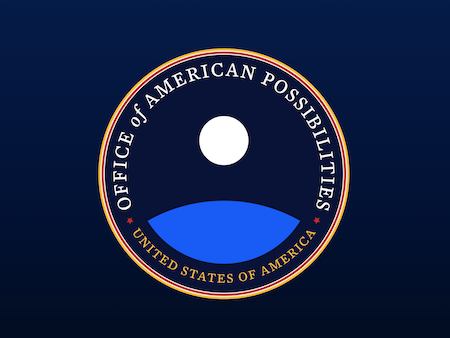

Building Markets supports businesses across many sectors in accessing new market opportunities. Radha Rajkotia of Building Markets spoke with Erica

The Center for Native American Youth at the Aspen Institute is a national education and advocacy organization that works alongside

Riders for Health Nigeria works to improve the capacity and efficiency of healthcare delivery systems in Nigeria by ensuring that
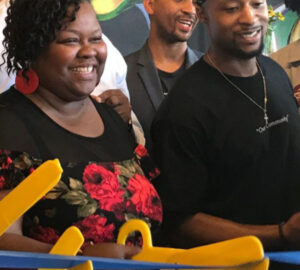
The Business Alliance for Local Living Economies (now Common Future) encourages a “localism” approach to decrease wealth disparities. By hosting
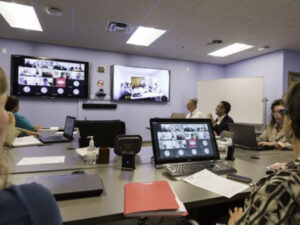
Providing access to international networks of expertise can improve the quality of healthcare available to those living in rural and
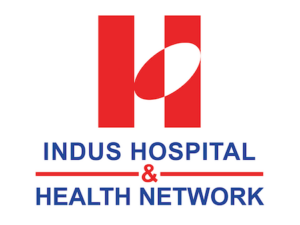
Indus Hospital and Health Network offers free healthcare services to people through a nationwide healthcare network of primary, secondary, and